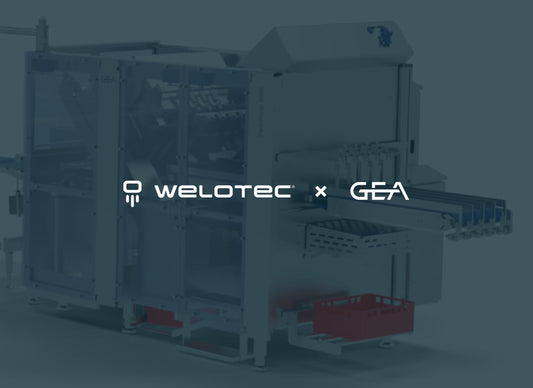4G vs 5G: Discover the advantages and disadvantages of network technologies in industrial automation.
The Welotec guide to choosing the right technology
In the rapidly advancing world of industrial automation, a crucial question arises: Which network technology is the right choice? Currently, we are in a transition phase where both technologies have their own strengths and weaknesses. Surprisingly, in some regions, the data transfer rates are even superior to the established technology. This blog post will highlight the key factors that should be considered when deciding between the two network technologies. We will discuss the pros and cons of both options in detail to help you make this complex choice.

Frequencies, speeds and ranges: The evolution of network technologies
Choosing the right network technology is not only a question of current needs, but also a question of technological evolution. Starting with 2G, which was designed mainly for voice transmission and simple text messaging, network technologies have steadily evolved. 3G brought higher data rates and enabled mobile Internet for the first time, but it was 4G/LTE that pushed the door wide open to industrial automation. With frequencies mostly in the 700 MHz to 2.5 GHz range, 4G offers speeds sufficient for most industrial applications. A special subsegment of 4G is LTE 450, which operates at lower frequencies and therefore offers greater range and better penetration, ideal for critical infrastructure. 5G, on the other hand, is a gamechanger that can use frequencies of up to 28 GHz or even higher. These higher frequencies not only enable high data rates, but also much lower latency. However, range is often limited at higher frequencies, making network planning more complex. Overall, the evolution from 2G to 5G shows a clear trend toward higher frequencies, faster speeds and specialized applications, but also more complex coverage and penetration challenges. Frequencies below 3 GHz retain their relevance for 5G technology to ensure comprehensive coverage.
4G: A proven choice for industrial networks?
In the context of industrial automation, deciding on the appropriate network technology is a key challenge. 4G, also known as LTE, offers some compelling advantages here. One of the main reasons for 4G’s popularity is cost efficiency. The hardware is significantly cheaper compared to newer technologies such as 5G, which can be a crucial factor, especially for companies with limited budgets. In addition, 4G is known for its lower power consumption on endpoints, which is not only environmentally friendly but can also lead to long-term cost savings. The widespread availability of 4G makes it a reliable option for applications that require broad geographic coverage. In addition, latency is sufficiently low in most cases to support a wide range of industrial applications. A specific example is LTE 450, a frequency band characterized by high range and penetration and particularly suitable for critical infrastructures.
Despite these advantages, there are also some disadvantages that should not be ignored. For one, 4G could be obsolete in about a decade, which could make long-term investments risky. For another, 4G has a limited frequency spectrum, which could limit the capacity for data transmission and the number of devices connected at the same time.

5G technology: A gamechanger for industry?
While 4G certainly has its justification in industrial automation, the progressive implementation of 5G brings with it a wealth of benefits that should not be ignored. First and foremost is the significantly higher bandwidth, which enables rapid data transmission and thus makes processes more efficient. Another revolutionary benefit is the wide range of spectrum partitioning options offered by network slices. This technology allows specific network segments to be created for different applications such as IoT, enabling guaranteed bandwidths or response times to be realized. In addition, campus networks, which can serve as a replacement for traditional Wifi networks, offer the possibility of seamless handover, which increases network reliability. 5G also scores with expanded spectrum to higher frequencies, increased transmitter and receiver sensitivity, and increased capacity per frequency. Added to this is the extremely low latency, which is invaluable for real-time applications in industry. In the future, energy consumption per megabyte is also expected to be lower than with 4G, promising long-term cost savings.
Before taking full advantage of 5G in industrial automation, the challenges and drawbacks should not be ignored. In industrial applications, where energy efficiency and cost-effectiveness are often critical, 5G’s higher power consumption on end devices could be problematic. This is particularly relevant for battery-powered devices or equipment deployed in remote or hard-to-reach areas. In addition, the initial cost of 5G modems and more complex antenna technology requirements cannot be ignored. These factors can increase installation costs and place increased demands on technical expertise, which must be taken into account in the overall consideration of operating costs.
Summary: 4G and 5G in industry – which fits better?
Both network technologies, 4G and 5G, have their strengths and weaknesses, especially when it comes to industrial applications. While 4G stands out in particular for cost efficiency, energy efficiency and broad availability, 5G stands out for advanced features such as extended bandwidth, specialized network segmentation and minimized latency.
Technology choice considerations: Comparison of 4G and 5G network standards.
For organizations seeking near-term deployment with limited financial resources, 4G could serve as a proven technology. It provides a robust infrastructure that has been successfully deployed in numerous industrial applications. In contrast, organizations that want to pursue a long-term technology strategy and invest in future-proof solutions should consider implementing 5G. The initial higher investment costs could be compensated by the enhanced functionalities and potential cost efficiency in long-term operation.
Choice as a critical success factor
The choice between 4G and 5G is highly dependent on the specific operational requirements and long-term goals of the organization. Both technologies offer valid solution approaches in industrial automation and can act as the optimal technology selection depending on the use case and operational criteria. The decision for a network technology represents a critical success factor in the context of the digital transformation of industry and requires a comprehensive evaluation.
Do you need support in the decision-making process, or do you need advice on your individual solution?
The Welotec team will be happy to assist you with broad expert knowledge on the topic of network technology and industrial automation.





























